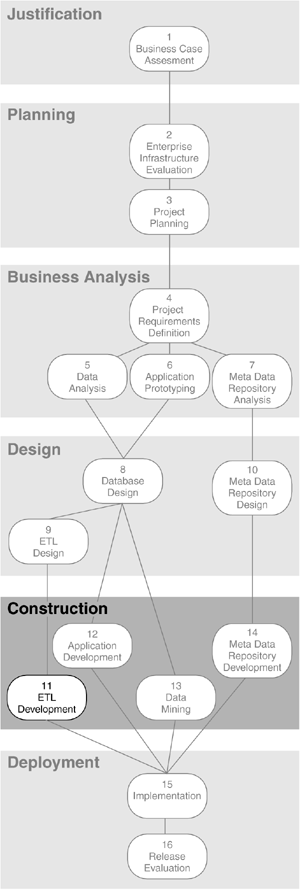Things to Consider Source Data Extracts  Who will write the ETL programs? Have those developers written ETL programs before? Do they understand the ETL process? Who will write the ETL programs? Have those developers written ETL programs before? Do they understand the ETL process?  Do ETL programs already exist from a previous release or another BI application? How many of them have to be expanded? Do ETL programs already exist from a previous release or another BI application? How many of them have to be expanded?  Can we ask the programmers of the operational systems to give us the extract files, or do we have to get the source data ourselves ? Can we ask the programmers of the operational systems to give us the extract files, or do we have to get the source data ourselves ?  What do we need to know about the operational systems before we can get the data? What operational programs have to finish running before we can extract the data from the source files and source databases? What do we need to know about the operational systems before we can get the data? What operational programs have to finish running before we can extract the data from the source files and source databases? ETL Tool  Have we worked with this ETL tool before, or is it new to us? Have we worked with this ETL tool before, or is it new to us?  Has the ETL team been sufficiently trained on the ETL tool? Has the ETL team been sufficiently trained on the ETL tool?  Can the ETL tool perform all the required transformations, or will we have to write some custom code? In what language (C++, COBOL)? Can the ETL tool perform all the required transformations, or will we have to write some custom code? In what language (C++, COBOL)? ETL Process Dependencies  What are the dependencies among program modules? In what sequence do we have to run our ETL programs (or the ETL tool modules)? What are the dependencies among program modules? In what sequence do we have to run our ETL programs (or the ETL tool modules)?  How many program modules can we run in parallel? How many program modules can we run in parallel?  What are the dependencies among the tables? Do some tables have to be loaded before others? What are the dependencies among the tables? Do some tables have to be loaded before others?  How many tables can we load in parallel? How many tables can we load in parallel? Testing  Will we conduct peer reviews? Are we using extreme programming (XP) techniques? Will we conduct peer reviews? Are we using extreme programming (XP) techniques?  How many testers will we have on the project? How many testers will we have on the project?  Will the subject matter expert and business representative participate in testing? Will the subject matter expert and business representative participate in testing?  Who will be the testing coordinator ? Who will log the test results and maintain the test log? Who will be the testing coordinator ? Who will log the test results and maintain the test log?  What type of testing do we need to perform? Integration or regression testing? Performance testing? QA testing? Acceptance testing? What type of testing do we need to perform? Integration or regression testing? Performance testing? QA testing? Acceptance testing?  Which business people will participate in acceptance testing? Only the business representative? The subject matter expert? Other business people? Which business people will participate in acceptance testing? Only the business representative? The subject matter expert? Other business people? Technical Considerations  What technical platform issues do we have to take into consideration? What technical platform issues do we have to take into consideration?  How is the staging area set up? On a dedicated server? How is the staging area set up? On a dedicated server?  Will the ETL process be split between the mainframe and one or more servers? Will the ETL process be split between the mainframe and one or more servers?  What environments does the ETL tool run in? What environments does the ETL tool run in?  What type of middleware do we need? What type of middleware do we need? | 
 Who will write the ETL programs? Have those developers written ETL programs before? Do they understand the ETL process?
Who will write the ETL programs? Have those developers written ETL programs before? Do they understand the ETL process?